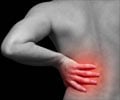About
Most of us nowadays suffer from acute back pain at one point of time in life giving in to our sedentary lifestyle and bad posture.
When we happen to visit our physical therapist who advises us for the traction therapy, we are scared with the thought of a machine pulling our spinal section apart. But Relax! The pull is for good! The pull is friendly and a comfortable one.

By definition, traction is the act of pulling apart. Traction when applied on our body relates to imparting stretch to that given part of the body. Its aim is to relieve undue pressure on our nerves which is the leading cause of pain.
Whenever our hand gets constricted or compressed between two surfaces, we feel irritated, agitated and pain. Similarly, when the nerves passing through our vertebral bones get compressed, we suffer in a similar manner. Only difference stands that we are unable to localize that pain owing to the wide spread route of the compressed nerve.
For spinal pain, traction is mainly used for the pain in neck region and lower back region.
The look and feel of the traction machine is very drastic. Traction involves the use of pulleys and weights to stretch the back. The thought of our back getting stretched by heavy force is scary. Every patient goes through this dilemma of whether to get the traction or not, as and when their therapist advises them. Therefore, it is really important that we get aware about how this treatment works. Yes! We may not master the therapy by reading this, but at least we are aware of what is good for us. After all, it is our right and duty to be aware about what we are seeking in terms of physical or health care.
The rationale behind application of traction on the back is to pull the vertebrae apart thereby allowing the bulging material ( as applicable to PIVD patients wherein the disc present in between the vertebral bones gets herniated out of the bony column) to slip back into place. Affected patients often experience pain relief undergoing physical traction. Although, there is no scientific evidence that traction provides any long-term benefits for people with back pain, the temporary benefits are certain.
Traction is the most effective form of treatment in cases where back pain has been caused by pinching or compressing of nerve. Pinched nerve of the back implies that the nerve traveling between the back vertebrae has been compressed. This results in symptoms of pain, numbness, tingling, burning and soreness in the back and extending to our lower limbs. The symptoms might radiate up to our foot.
Nerve compression might result from either narrowing of the inter-vertebral space (space in between two spinal bones from where the spinal nerve passes) in diseases like spinal stenosis or in case of herniated or protruding disc bulge which can put pressure on the nerve. Another possibility that can compress the nerve is a traumatic injury to the back resulting in inflammation (swelling) around the vertebral joint and tightening of vertebral muscles. The most effective approach to treat a pinched nerve is to reduce the compression of the vertebrae through traction and realignment of vertebral bones. This further helps in loosening of muscles resulting in decrease in pain and inflammation.
Lumbar traction is an effective form of physical therapy treatment but when used in conjunction with other forms of physical therapy treatment including, over the counter medication, physical therapy, heat/ice therapy and massage; works wonders for patients with backache.






